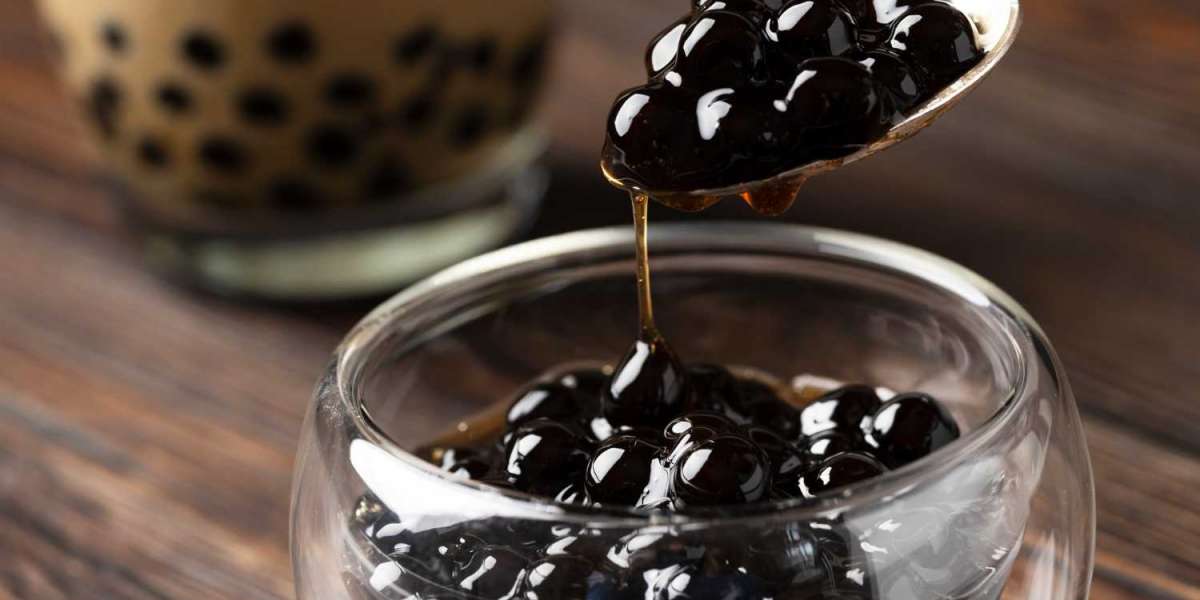What Are Tapioca Pearls?
Tapioca pearls are small, round balls made primarily from tapioca starch, which comes from the cassava root. When raw, these pearls are white and opaque. Once cooked, they transform into glossy, chewy spheres with a consistency somewhere between gummy candy and jelly. The most common variety is black tapioca pearls, which get their dark color from brown sugar or caramel coloring.
While their chewy texture (known in Taiwan as "Q") is the main attraction, they’re relatively flavor-neutral, absorbing the taste of whatever sweeteners or syrups they're paired with. This makes them ideal for customizing with different types of bubble tea.
A Brief History of Boba Tea and Tapioca Pearls
Boba tea originated in Taiwan in the 1980s, though its exact origins are still debated. Some credit Chun Shui Tang tea house in Taichung for adding tapioca balls to iced tea, while others point to Hanlin Tea Room in Tainan.
Originally, boba tea was a simple mix of black tea, milk, sugar, and tapioca pearls, shaken with ice. Over time, it evolved into a vast category that includes fruit teas, slushies, cheese foams, and even non-tea-based drinks. The tapioca pearls remained constant throughout these innovations, helping boba tea to gain a devoted following in countries all over the world.
How Tapioca Pearls Are Made
The process of making tapioca pearls is surprisingly simple but requires patience and precision. Here's a basic overview:
Tapioca starch is mixed with boiling water to form a dough.
The dough is kneaded until smooth and then rolled into small balls.
The balls are boiled for 30 minutes or more until they reach the desired chewy texture.
Once cooked, they are soaked in a sugar or honey syrup to add flavor and prevent them from sticking together.
Most commercial boba shops use pre-made tapioca pearls that only need to be boiled and sweetened. However, homemade versions allow for customization in size, color, and flavor.
The Science Behind the Chew
The iconic chewiness of tapioca pearls comes from the unique properties of tapioca starch, which contains amylose and amylopectin. When heated, these components gelatinize, giving the pearls their signature texture. Once cooled, the starches reconfigure, giving tapioca its elasticity and bounce.This gelatinous but firm bite is often described as "Q" in Taiwanese food culture, a term used to represent a springy and satisfying chew. It’s this texture that makes boba so addictive and enjoyable.
Different Types of Tapioca Pearls
Although traditional black tapioca pearls are the most popular, there's a growing variety of pearls to choose from:
White or clear pearls: Made without coloring, often used in fruit teas for a lighter taste and look.
Mini pearls: Smaller in size and often used in desserts or for a more subtle chew.
Flavored pearls: Infused with flavors like strawberry, mango, or matcha.
Popping boba: Not made from tapioca at all, but from seaweed extract, filled with juice that bursts in your mouth.
Each type of pearl adds a different experience to your drink, making boba tea incredibly customizable and fun to explore.
How to Cook and Store Tapioca Pearls
Cooking tapioca pearls properly is key to achieving the right texture. Here’s a step-by-step guide:
Boil a large pot of water (about 10 cups for every 1 cup of pearls).
Add the pearls once the water reaches a rolling boil.
Stir occasionally and cook for 25–30 minutes.
Turn off the heat and let the pearls sit covered for an additional 20–30 minutes.
Drain and rinse under cold water.
Soak in sugar syrup for at least 10 minutes before serving.
Tapioca pearls are best consumed within 4–6 hours after cooking. If left too long, they can harden or become mushy. While uncooked pearls can be stored for months in a sealed, dry container, cooked pearls should never be refrigerated, as this ruins their texture.
Whether you’re sipping on a classic milk tea or trying a trendy new flavor, tapioca pearls are what make boba tea such a memorable treat. Their unique chew, rich history, and versatility continue to win over hearts—and taste buds—around the world.
Let me know if you'd like this tailored for SEO, adapted into a script, or paired with images or infographics.




